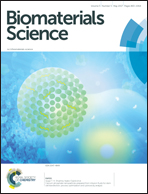Modulation of the mechanical properties of bacterial biofilms in response to environmental challenges
Abstract
Bacterial communities form biofilms on a wide range of surfaces by synthesizing a cohesive and protective extracellular matrix. The morphology, internal structure and mechanical stability of a biofilm are largely determined by its constituent polymers. In addition to mediating adhesion to surfaces, biofilms control the uptake of molecules and regulate the permeability of the matrix to gases and chemicals. Since biofilms can cause significant problems in both industrial and healthcare settings, there is great interest in developing strategies that either inhibit their formation or facilitate their elimination. However, although important in this context, the material properties of bacterial biofilms are poorly understood. In particular, little is known about how the different components of a biofilm matrix contribute to its various physical characteristics, or how these are modified in response to environmental cues. In this review, we present an overview of the molecular composition of different bacterial biofilms and describe techniques for the characterization of their viscoelastic properties. Finally, we summarize our current understanding of how the mechanical properties of bacterial biofilms are altered by different environmental challenges, and we discuss initial insights into the relationship between these responses and the composition of the matrix.



 Please wait while we load your content...
Please wait while we load your content...